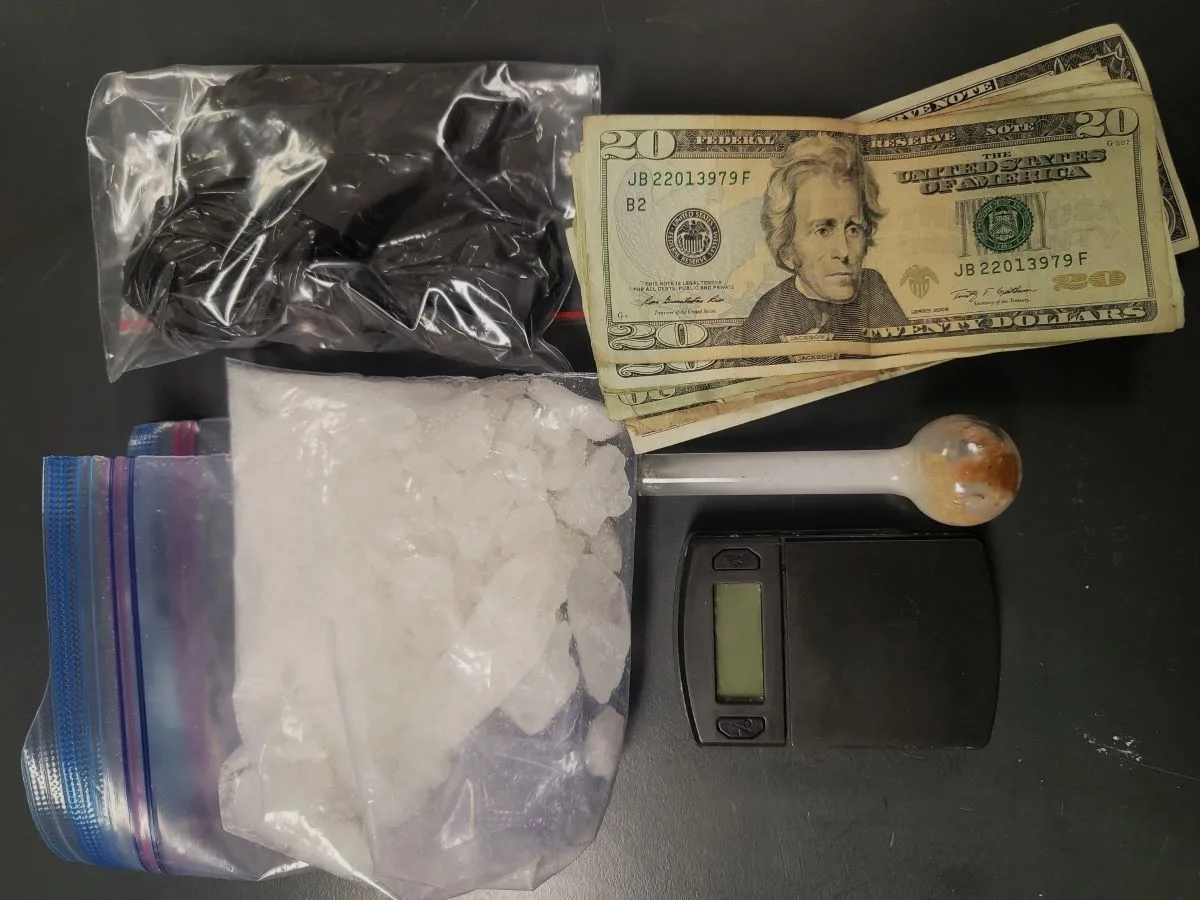On Wednesday, September 24, 2025, at approximately 9:30 PM, an Orange County Sheriff’s deputy conducted a traffic stop in unincorporated Tustin, according to the O.C. Sheriff’s North Patrol.
A probation search of the vehicle yielded approximately 210 grams of methamphetamine and narcotic sales indicia.
The suspect was arrested and booked into OCJ on a felony drug charge.
Based on California law, here are the penalties the suspect is likely facing for possession of approximately 210 grams of methamphetamine with intent to sell:
- Felony charge under Health & Safety Code § 11378: Possession of methamphetamine with intent to sell is a felony in California.
- Jail time: Up to 3 years in county jail.
- Fines: Up to $10,000.
- Probation possibility: In some cases, probation may be granted instead of jail time, but this is less likely when the quantity is large and sales indicators are present.
- No drug diversion eligibility: Because this is a possession-for-sale charge, the suspect is not eligible for California’s drug diversion programs, which are typically available for simple possession cases.
- Additional consequences:
- A felony record, which can affect employment, housing, and access to public benefits.
- Possible enhanced penalties if the suspect has prior convictions or was near a school or children during the offense.
The recidivism rate for probationers in California varies depending on how it’s measured, but here are the key figures:
- Reconviction rate: Approximately 44.6% of individuals on probation in California were reconvicted within three years.
- Rearrest rate: Typically higher than reconviction rates, though specific numbers for probationers vary by county and supervision type.
- Return-to-prison rate: Lower than reconviction and rearrest rates, especially after reforms like SB 678 and Proposition 47.
- Impact of reforms: California’s probation system has implemented evidence-based practices that have helped reduce prison revocations and improve public safety without increasing crime rates.
